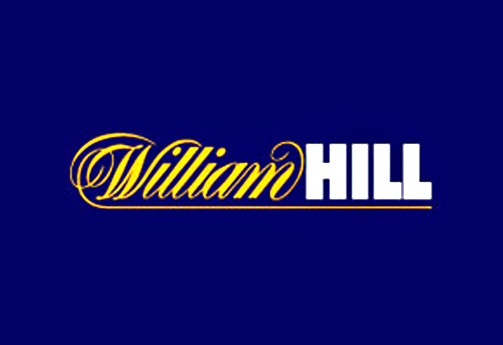
You click ‘spin’. The reels blur, your heart does a little flip, and then… a loss. It happens. But have you ever wondered, in that moment, if the game was truly on the level? For decades, online gaming operated on a simple premise: trust us. The inner workings were a black box, sealed shut by proprietary algorithms and corporate secrecy.
That era is ending. A new standard is emerging, one built not on blind faith, but on cryptographic proof. It’s called provably fair gaming, and it’s being supercharged by the immutable ledger of blockchain technology. Let’s pull back the curtain.
What is Provably Fair, Anyway? The End of the Black Box
At its core, provably fair technology is a method that allows you—the player—to verify each and every game result. It proves that the outcome wasn’t manipulated after you placed your bet. Think of it like a digital seal on a deck of cards. Before the game starts, the house shuffles the deck and seals it in a tamper-proof envelope. You get to see the seal. After the hand is played, you can break the seal and check that the shuffle was legitimate and the cards dealt were indeed from that sealed deck.
In technical terms, this is done using cryptography. The system generates a secret seed (the house’s secret number) and a client seed (often one you provide). These are combined to create a hash—a long, scrambled string of characters that represents the future game outcomes. This hash is published before the round begins. After you play, the seeds are revealed. You can then run them through a verifier to confirm that the result matches the initial, pre-published hash.
The result? You’re no longer taking anyone’s word for it. You have the tools to check for yourself.
Where Blockchain Fits In: The Unchangeable Record Keeper
Now, here’s where things get really interesting. Traditional provably fair systems are a huge step forward, sure. But they often rely on the casino to properly store and present the verification data. What if they… lose it? Or, you know, “lose” it?
Blockchain eliminates this single point of failure. Imagine that instead of the casino holding that sealed envelope, they nail a copy of its contents to a public bulletin board that no one can ever tear down or alter. That’s the blockchain. It’s a decentralized, distributed ledger that records data in a way that is immutable and transparent.
When a gaming platform leverages blockchain for its provably fair algorithm, it can write the critical hashes and results directly onto the chain. This creates a permanent, timestamped, and publicly auditable record. It’s trustless verification. The system’s integrity is baked into the code and the network, not just a promise from a company.
The Nuts and Bolts: How It Works in Practice
Let’s make this concrete. Here’s a simplified, step-by-step look at a blockchain-powered provably fair round:
- Setup: Before any bets are placed, the system generates a cryptographic hash of its secret seed and posts it to the blockchain. You might also provide a client seed.
- The Game: You play your round—spin the slot, get dealt your cards.
- Reveal: After the round concludes, the platform reveals its secret seed.
- Verification: You (or a third-party tool) take the revealed seed, your client seed, and the game data, and run it through a known algorithm. The output should match the hash that was permanently recorded on the blockchain before the game started.
If they match, the game was fair. If they don’t, well, you’ve just caught a platform red-handed. This process effectively makes the concept of “the house edge” completely transparent. You can see the mathematical rules of the game, set in digital stone, before you even play.
| Traditional System | Blockchain-Enhanced Provably Fair |
| Trust in a central authority | Trust in code and cryptography |
| Internal, private logs | Public, immutable blockchain records |
| Hard to audit independently | Easily auditable by anyone, anytime |
| Potential for post-bet manipulation | Zero manipulation after the hash is on-chain |
Why This Is a Game-Changer for Players and Platforms
Honestly, the benefits here are massive. For players, it’s about empowerment. You regain a sense of agency. The anxiety about whether a site is rigged starts to fade. You’re not just a passive participant; you’re an active verifier. This is especially crucial in a world where digital skepticism is, frankly, pretty healthy.
For legitimate gaming platforms, adopting blockchain transparency is a powerful statement. It’s a way to build genuine trust at a time when trust is the most valuable currency. It’s a competitive advantage that screams, “We have nothing to hide.” This can lead to more loyal customers and a stellar reputation.
And let’s talk about audits. In the old model, a platform would hire a third-party firm to test their software—an expensive and periodic event. With a blockchain-based system, the audit is continuous and public. Every player becomes an auditor with every bet they place. That’s a whole new level of accountability.
It’s Not All Perfect… The Hurdles on the Horizon
Of course, no technology is a magic wand. The main challenge is user experience. Explaining cryptographic hashes and seed verification to the average person can be… daunting. The industry needs to find ways to make this verification process seamless—maybe a one-click “verify fairness” button that does the heavy lifting in the background.
There’s also the issue of education. Many players are simply used to the old way. They don’t know to ask for provable fairness, let alone how to check it. Widespread adoption will require a shift in player consciousness, a demand for this new standard of gaming integrity.
The Future is Verifiable
So, where does this leave us? The fusion of blockchain and provably fair gaming isn’t just a niche trend for crypto-enthusiasts. It’s the blueprint for a more honest and open digital gaming industry. It transforms the relationship between player and platform from a one-sided promise into a collaborative, verifiable truth.
The old mantra was “trust us.” The new one is “trust, but verify.” And with blockchain, the power to verify is placed directly into your hands. It’s a quiet revolution, happening one transparent hash at a time.














